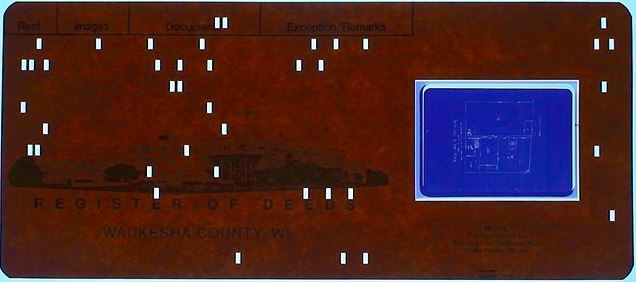Microfilm Aperture Card Scanning Services: Efficient and Affordable Solutions
Our microfilm aperture card scanning services are tailored to help you convert engineering drawings into digital formats at competitive prices. Here’s how we stand out:
Why Choose Our Aperture Card Scanning Services?
Flexibility in Conversion
We offer bitonal or grayscale scanning, with output formats such as PDF, JPEG, TIFF, and even OCR-processed files. The result is high-quality digital images that preserve your valuable data.
Support for All Project Sizes
Whether you have 10 or 1,000 aperture cards, we’ve got you covered. No project is too small or too large for our team.
Affordable Pricing
Our service is cost-effective and often more economical than large-format document scanning. Save on costs by digitizing aperture cards with us!
What Is an Aperture Card?
An aperture card is a punched data card with a small cut-out window that holds a microfilm frame, typically a 35mm frame. These cards often store large-format engineering drawings or industrial sketches.
Common Uses
Aperture cards are primarily used in:
- Construction and Design Engineering: Ideal for duplicating, transporting, and storing engineering drawings.
- Data Indexing: Some cards feature a Hollerith punch (a hole pattern) for indexing, which certain microfilm scanners can read automatically.
Our Scanning Process
Specialized Equipment
We use advanced microfilm scanners designed specifically for aperture cards. Unlike regular document or book scanners, these devices are equipped with:
- Magnifying Lenses: Essential for capturing microfilm details.
- Versatility: Capable of handling standard, non-standard, and damaged cards.
- High Image Quality: Featuring virtual rescan technology for consistent results.
Focus on Efficiency
Our dual-device setup includes:
- Specialized Aperture Card Scanners for standard and intact cards.
- Generic Microfilm Scanners for damaged or fragile cards.
This setup ensures:
- Precision in scanning both damaged and non-damaged cards.
- Improved productivity with lower operating costs, translating into better prices for our clients.
Factors Affecting Scanning Costs
The cost of scanning aperture cards depends on several factors:
Quantity of Cards
The more cards you scan, the lower the per-card cost. Bulk projects significantly reduce overall expenses.
Card Condition
Damaged cards require more careful handling and may cost more to digitize.
Post-Processing Needs
Services such as image cleaning, OCR, and advanced indexing can increase costs, especially if additional processing is needed for accuracy.
Indexing Challenges
Large-format drawings on aperture cards are difficult to index automatically, which may increase labor costs.
Aperture Card Scanning vs. Other Formats
Microfiche Scanning
While both aperture cards and microfiche are microform-based, there are key differences:
- Storage Capacity: Microfiche can hold up to 48 drawings per sheet, making it ideal for compact storage. Aperture cards typically store one drawing per card.
- Government Preference: Some government agencies prefer aperture cards, limiting microfiche usage in certain projects.
Document Scanning
Aperture cards offer distinct advantages over traditional document scanning for engineering drawings:
- Compact Shipping: Up to 5,000 cards can fit in just two standard boxes, reducing shipping costs.
- Hollerith Code Indexing: Punched codes on some cards allow for automated data retrieval during scanning, increasing efficiency.
Why Choose Us?
Our aperture card scanning services stand out because:
- We Handle All Conditions: From pristine to damaged cards, our process ensures exceptional results.
- Post-Processing Excellence: We offer image enhancement, OCR, and detailed indexing services.
- Competitive Pricing: Whether you have a small or large project, we’ll work within your budget.
Let’s Get Started!
Convert your aperture cards into digital formats with a trusted partner. Fill out our request form today to get a personalized quote for your aperture card scanning project!
 (4.8 / 5)
(4.8 / 5)







